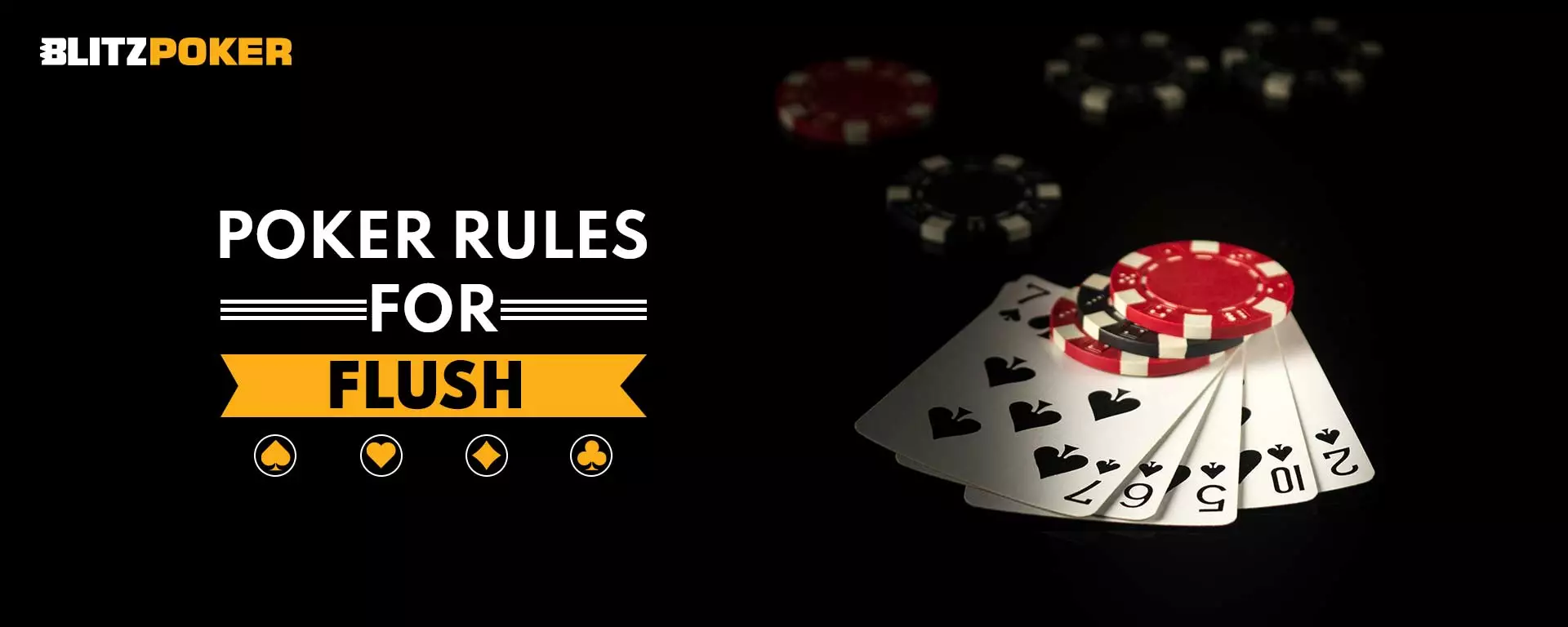Poker Rules For Flush
Poker is a card game that has been around for a long time and is loved by many. Infused with strategy and skill, the game of poker becomes an exhilarating experience on BLITZPOKER, offering you the chance to win real money online. One interesting hand in the game is something that we know as a flush. This hand can be made when a player has five cards of the same suit when they’re not in order. What makes this special is not just the chance to win, but also the skill in putting together a set of cards that match perfectly. It shows the player’s smart thinking and strategy, making the game more than just luck as some would call it. Let us now get into the discussion of the poker rules for flush.
What is a Flush?
A Flush is the fifth-best hand in poker. Essentially, you’re looking for 5 cards that belong to the same suit – all hearts, all diamonds, all clubs, or all spades.
Now, make sure you don’t confuse it with a Straight Flush, where the cards need to be in a sequence.
In Texas Hold’em, achieving a Flush is noteworthy, particularly if it’s the highest form – an Ace-high Flush. Consider this: A♥K♥10♥7♥2♥. That’s what an Ace-high Flush.
Make sure not to get overly fixated on the suits; they aren’t a game-changer in a Flush. Even with an Ace-high Flush, it doesn’t automatically mean it’s the absolute best. The card rank plays a significant role. In the poker hierarchy, landing an Ace-high Straight Flush is the pinnacle i.e., a Royal Flush.
Poker Rules For Flush
A Flush is when you’ve got all five cards of the same suit, whether it’s spades, hearts, diamonds, or clubs. What’s neat about this hand is that the cards can be of different values, creating a mix of numbers. However, it’s crucial to avoid having the cards in consecutive order; otherwise, it transforms into a fancier Straight Flush, not your regular Flush.
In the world of poker hands, a Flush is unique because it values the suit over the card values. You can have a strong Flush with high-value cards or a more modest one with lower-value cards.
Now, if two players both happen to land a Flush, determining the winner is a matter of the highest card. Take, for example, Player A with A, K, 7, 5, and 3 of spades, and Player B with K, 9, 6, 4, and 2 of diamonds. Player A secures the win with a high-value Ace, showcasing that not all Flush hands are equal; the strength of your cards plays a vital role in your chances of winning!
Hands That Can Beat a Flush in Poker
Understanding what beats a Flush in poker is crucial for mastering the game. The strength of a Flush is determined by the highest card it contains, followed by the next highest, and so on.
Let’s look at some examples of Flush hand combinations you might encounter in the game:
A♣ K♣ 10♣ 7♣ 3♣
K♠ Q♠ 7♠ 5♠ 3♠
10♥ 9♥ 8♥ 3♥ 2♥
10♦ 9♦ 4♦ 5♦ 2♦
And the list goes on.
To enhance your hand’s strength, aim for an Ace-high Flush. This increases your chances of winning in scenarios where two players have Flush hands.
In the provided examples, an Ace high Flush trumps a King high Flush, a Jack high Flush, and so forth. Similarly, a King high Flush takes precedence over a Jack high Flush. Knowing these hierarchies can be your key to success in poker!
How Ties Are Broken in a Flush V/s Flush Scenario
Having a firm grasp of the tie-breaking rules for a Flush is crucial for any poker player. The cardinal rule dictates that the Flush with the highest card claims victory, regardless of suit — be it spades, hearts, diamonds, or clubs. Should the highest cards in two Flush hands match, the tie-breaking journey extends to the next highest cards in each hand, continuing until a distinction is made.
The Ace introduces a strategic advantage; if one Flush boasts an Ace as its highest card, it prevails over other high cards. For example, an Ace-high Flush triumphs over a King-high Flush. The comparison doesn’t stop there; it progresses through each subsequent card, determining a winner step by step. Even a subtle difference in any card can tip the scales in favour of one Flush over another.
Let’s consider a scenario where Player A holds a Flush with the cards 9♠ 7♠ 5♠ 3♠ 2♠, and Player B has a Flush with 10♥ 8♥ 6♥ 4♥ 2♥. In this case, the tie-breaking process involves comparing the highest card, then the next highest, and so forth. While the suits may differ, the rank of the cards ultimately determines the winner. In our example, Player B emerges victorious, showcasing how the evaluation of card rankings influences the outcome in Flush scenarios within the landscape of poker rules for Flush in Texas Hold’em.
Let’s consider another scenario where things get interesting. Player A holds a Flush with cards 8♣ 6♣ 4♣ 3♣ 2♣, and Player B with an identical Flush featuring 8♠ 6♠ 4♠ 3♠ 2♠. Now, normally, we’d look at the highest cards to break the tie, but to our surprise, both players share the same highest card – an 8. Then we check the next highest, the 6, and here’s the kicker – it’s a match again. This pattern repeats through every subsequent card, making each hand a mirror image of the other.
In this quirky poker twist where every card in both Flush hands is a perfect match, what happens? The pot gets split equally. It’s like a rare poker situation, showing us that understanding tie-breaking rules isn’t just about deciding a winner but sometimes it leads to a shared victory.
